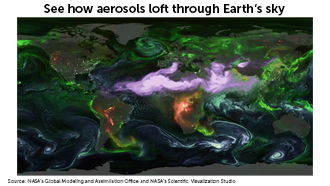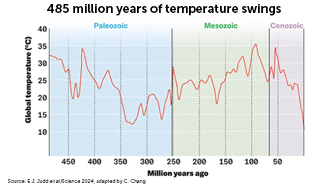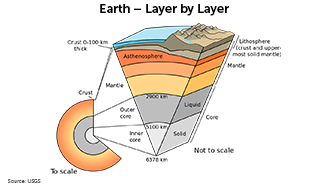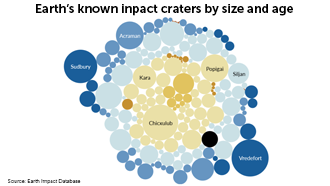Search Results

Mapping the Mississippi
Freshwater fish make vast treks, but their migrations remain hidden beneath the surfaces of rivers. This invisibility has left freshwater fish largely overlooked, even as their populations worldwide have plummeted. Now, global “swimways” for migratory fish are emerging as an important conservation focus.

Aerosols in the air: Art in motion?
The atmosphere abounds with aerosols, tiny particles with large sway over global temperature. A new visualization from NASA reveals how these airborne particles swirl through Earth’s sky.

Earth’s history of temperature shifts
Earth’s climate doesn’t have to look like it does now. In fact, it usually hasn’t. Across 4.5 billion years, geologic forces have shaped the planet’s climate from its fiery infancy to the (for now) chilly present. Studying these changes may help us understand what may happen next because of climate change.
Winding Watersheds
Pollution that runs off into streams, rivers and lakes can travel far because watersheds are connected by underground aquifers. Students will identify and describe the characteristics of their local and adjacent watersheds before describing how to monitor watershed pollution.

Earth and its many layers
To really understand Earth, you need to travel thousands of kilometers beneath our feet. Starting at the center, Earth is composed of four distinct layers.
The case of the haunted railroad
Strange ghostly blue lights have haunted the little town of Summerville, S.C. for decades. Reports of spectral balls of light floating along a desolate stretch of railroad inspired a ghostly local legend. Learn how legends can inspire real-world science. Then discuss similarities and differences between scientific theory and legend while answering questions about a proposed geologic explanation for this phenomenon.

Earth’s impact craters
Space rocks that have smashed into our planet have left impact craters. Many of the craters have been wiped away by erosion, but scientists have cataloged the survivors, including some that are over one billion years old.
Slumbering water volcanoes
ooking for exciting and important applications of the phases of matter? Have students answer a set of questions relating changes in pressure to changes in states of matter. Learn about how hydrothermal explosions occur and the risk for these at Yellowstone National Park, all while discussing how geologists use core data to piece together geological history.
Coral Conference
Coral reefs are one of the most biodiverse ecosystems on the planet. Along with providing food and shelter for a variety of marine organisms, coral reefs reduce erosion and protect coastal cities from storms. However, coral reefs are threatened by the effects of climate change. In this activity, students will model the complex interactions that occur within corals, their ecosystem and the Earth’s spheres to learn about how climate change harms coral reefs. After modeling how these interactions change with increasing ocean temperatures, students will brainstorm potential ways to solve or mitigate coral bleaching.
Pink diamonds
Colliding tectonic plates might make your diamond blush. Learn how differences in crystal structure give rise to distinctive physical differences, such as the rare pink diamonds of Western Australia. Answer questions about the value of skepticism in science and discuss how uncovering the history of our planet can give us a treasure-hunting lead.
How Erosion Alters the Landscape
When wind and water move, they don’t move alone — they take parts of the land with them. In this activity, students will investigate how water carries sediments from one location to another via erosion and will explore how this natural process can alter the landscape.
Lake scavenger hunt
Lakes can vary in color based on levels of sediment, organic matter and algae. Sometimes though, a lake will stand out – not matching the other lakes in an area. Look for these anomalies by participating in a virtual lake scavenger hunt, and help figure out why these lakes don’t fit in! In this activity, students will learn how climate change influences lake color and will investigate lakes with irregular colors that have been impacted by natural or human-made forces.